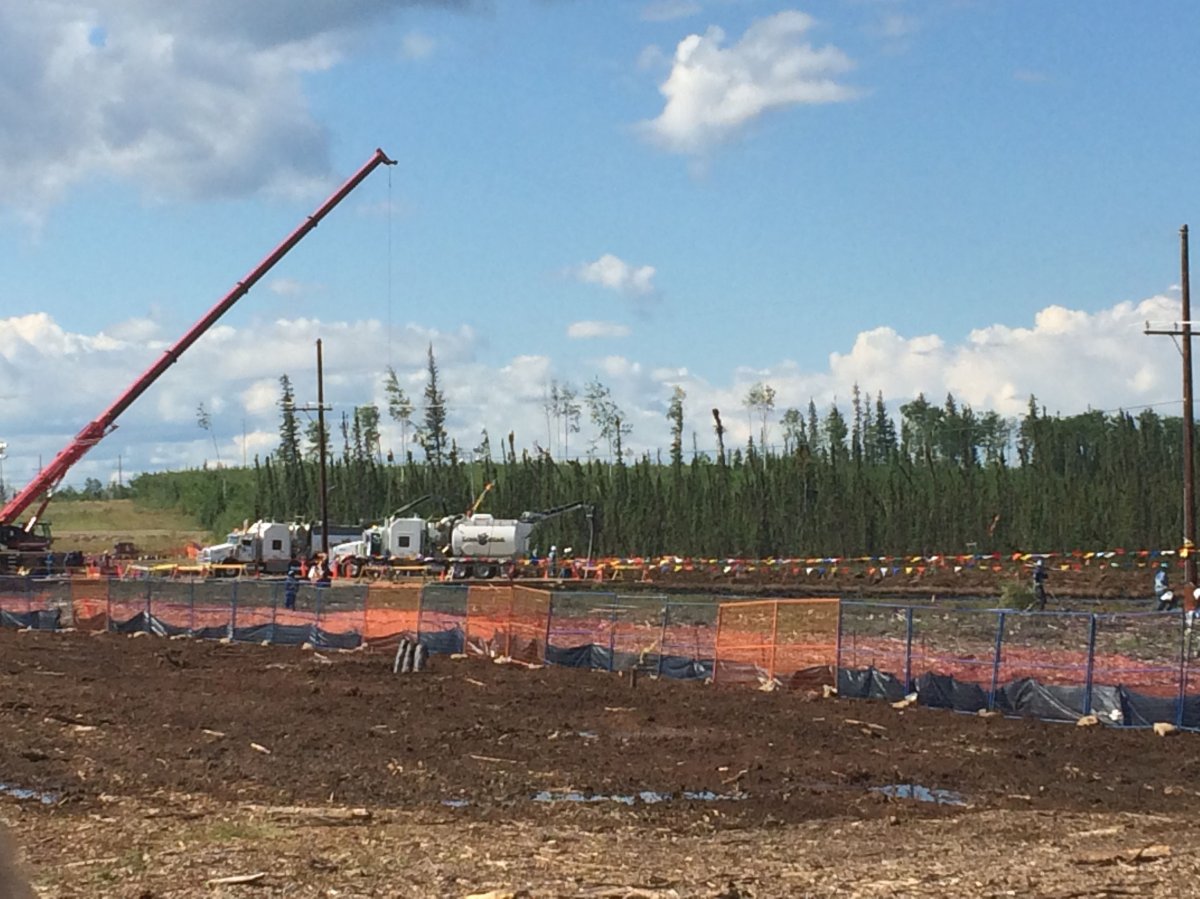WATCH ABOVE: One week after the discovery of a massive emulsion spill, Nexen opened up a portion of its Long Lake site for a tour. Shallima Maharaj was there.

ANZAC, Alta. – Nexen Energy says a major oil pipeline leak detected last week in northern Alberta started some time within a two-week period dating back to late June.
Ron Bailey, the company’s senior vice-president of Canadian operations, says officials still don’t know precisely when the pipeline ruptured.
But Bailey says the company believes the pipeline started leaking between June 29, when crews finished a cleaning, and July 15, when a contractor discovered it.
The spill of about five million litres of bitumen, sand and produced water was discovered near Nexen’s Long Lake oilsands facility, about 35 kilometres southeast of Fort McMurray. The break occurred just over a kilometre from the Long Lake plant.
Mike Hudema of Greenpeace Canada’s climate and energy team said it is stunning that the spill may have gone undetected for as long as that.
“It’s shocking to learn that the pipeline may have been spilling for two weeks before it was discovered – and even then, only by accident,” said Hudema in a statement.
“Warning bells should be going off for Canada’s premiers right now about the dangers they are bringing to their communities if new pipelines are built because that’s what they’re calling for with the Canadian Energy Strategy.”
Nexen Energy hosted a tour for news media Wednesday of the site of the spill, which left 16,000 square metres of muskeg slathered in bitumen, sand and produced water. The site has been fenced off as cleanup efforts continue and plastic eagles have been set up to deter wildlife from the area.
“I’m getting kind of the sense that people think that we’re being pushed to do things unsafe and … I just want to give a little bit of a personal view on that,” said Ron Bailey, Nexen’s senior vice president of Canadian Operations. “I actually believe that CNOOC, by taking us over, has increased our focus on safety. Right from the bottom of their heart, I can say that.
“They have driven us to look, in multiple ways, in other words, with independence, helping us to be better at things,” said Bailey.
“This is not about a rush job, this is not about cuts or anything like that. This is an unfortunate accident. We’re going to get to the bottom of it, we’re going to understand it, and we’re going to own it.”
Nexen is a Canadian company that was taken over by China’s CNOOC Ltd. a few years ago.
READ MORE: Nexen sets up wildlife fence, will start testing water at spill site
On Sunday, a dead duck was found at the spill site, but the company said it believes the animal died before it put the fences, wildlife cannons and other deterrents in place in an effort to limit further environmental harm.
“It’s disheartening to see the site and it’s disappointing that this has happened,” Nexen Energy CEO Fang Zhi said after hosting the media tour.
“I therefore personally apologize for the consequences this might have caused.”
The pipeline was installed last year and a warning system didn’t detect the leak. The company is investigating.
“Our focus as of now is ensuring the safety of our workers on the site, minimizing whatever impact on the environment and on the wildlife, as well as understanding the root causes of this incident through investigations,” Zhi said.
The double-walled pipeline is designed to take raw bitumen from the ground to the Long Lake processing plant. The pipeline operated at 100 degrees Celsius to keep the thick bitumen it carried fluid.
Colin Woods, a manager of enforcement and surveillance at the Alberta Energy Regulator who was at the site, said the pipeline design is fairly new.
“It’s a relatively new technology,” said Woods. “It’s not commonly used.”
Bailey said it will take months before the company can determine what caused the leak. He said the outer section of the pipe had a smaller hole than originally thought, but the company has not been able to look at the inner pipe.
Bailey said he also doesn’t know how long the cleanup will take since their long-term remediation still has to be approved by the Alberta Energy Regulator. About 130 workers are on site, working to contain and vacuum the spill.
Alberta Energy Minister Margaret McCuaig-Boyd and Environment Minister Shannon Phillips plan to visit the site Friday.
With files from Global News reporter Shallima Maharaj












Comments